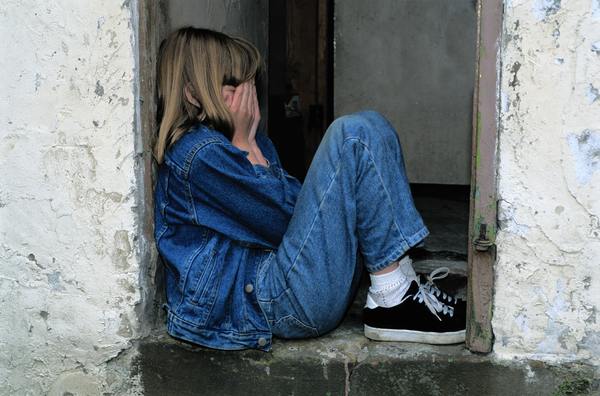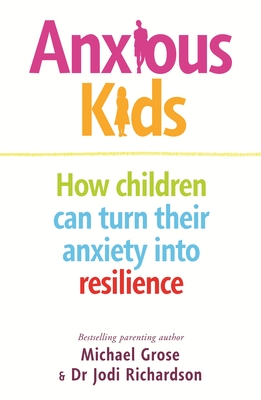More children than ever before experience anxiety.
As a parent, it can be difficult to know whether your child is suffering from anxiety and what you can do to help.
A new book, Anxious Kids, offers a new perspective on children’s anxiety.
Bestselling parenting author Michael Grose and wellbeing expert Dr Jodi Richardson explain the anxiety epidemic and offer useful advice to help turn a child’s anxiety into resilience.
In this extract, Grose and Richardson explain how children’s anxiety has changed and the many different faces of the condition.
JUST HOW COMMON IS ANXIETY?
Parents all over the world are dealing with anxious children.
Between the tender age of four and the brink of adulthood at seventeen, on average one in seven kids are diagnosed with a mental illness in Australia.
Of all those kids, half are diagnosed with an anxiety disorder. That equates to roughly two kids in every Australian classroom, though some, if separation anxiety is in play, often don’t even make it to school. Anxiety disorders are the top disease burden for females aged between five and forty-four.
For boys and young men the top disease burdens are suicide and self-harm.
These boys and young men are integral to the data but their experiences are far from academic.
Most don’t understand why they think and feel the way they do and why they’re suffering. Many feel broken, and it impacts on the entire family unit.
When Australia conducted the first Child and Adolescent Survey of Mental Health and Wellbeing in 1998, anxiety disorders weren’t included. It wasn’t on the radar in the same way major depressive disorder and attention deficit hyperactivity disorder (ADHD) were. It’s fair to say it’s on the radar now.
The second and most recent Australian Child and Adolescent Survey of Mental Health and Wellbeing, published in 2015, paints a picture of the state of mental health of Aussie kids. It’s no oil painting.
Kids with a diagnosis of an anxiety disorder included those experiencing separation anxiety, social phobia, generalised anxiety disorder or obsessive-compulsive disorder. Anxiety disorders such as specific phobias – spiders, for example, or panic disorder or agoraphobia – weren’t caught in the research net.
Many anxious kids also go undetected. We think it’s reasonable, prudent in fact, to suggest that current statistics underestimate the enormity of the problem.
HOW HAS CHILDREN’S ANXIETY CHANGED
Professor Jean Twenge from San Diego State University is a researcher dedicated to understanding changes in youth mental health over generations. Professor Twenge and her colleagues crunched the numbers on mental illness data from over 77,000 American college and high school students between 1938 and 2007.
Between the 1930s and 1940s an average of 50 out of 100 students scored above average on measures of mental disorders. That number has now jumped to 85 out of every 100. That’s a 70 per cent increase in the number of students with symptoms of mental illness.
Similar research looking specifically at anxiety showed that the average American child in the 1980s reported more anxiety than child psychiatric patients in the 1950s. Increases in anxiety across generations have also been identified in China and the UK.
Kids are in the thick of an anxiety epidemic, and the role of parents is crucial.
Staggering as the numbers are, the stats don’t tell the whole story.
Each and every child enveloped by a statistic is a person – a young person whose life has taken a turn in an unexpected direction.
ANXIETY HAS MANY FACES
Kids experience anxiety in different ways. Some anxious kids can appear happy most of the time, but struggle with anxiety that affects only parts of their life, or shows up intermittently. Others can endure any one or a combination of frightening thoughts, inexplicable fear or dread, unrealistic to catastrophic worries, and physical symptoms varying from tummy aches to dizziness to not being able to get a full breath, to spotty vision.
In the early days anxiety is easy to overlook, often mistaken for blips in behaviour, attention, confidence, resilience and physical health.
Your little one doesn’t want to play at the park with the other kids? He’s a little shy. Your primary schooler has a meltdown when you visit the shopping centre? She’s just tired and having another tantrum. Fourth grader feeling too sick to go to school? Could be that food intolerance playing up again. Teenager won’t sit still and can’t concentrate in class? She’s fidgety and disruptive.
There are parents everywhere doing their best to raise their kids and help them navigate their shyness, tantrums and tendency to fidget. Nothing to see here. Just another day in the life of parents.
Then there are the kids who struggle to socialise or spend even a moment in big open spaces with crowds of people, or who become nauseated from worry about separating from their mum or dad. These kids also struggle to concentrate because they’re constantly in fight-or-flight mode.
Developmentally appropriate fears, worries and reactions to stress, paired with behaviour, personality, temperament, environment, circumstances and parenting combine in ways that can make it tricky for us as parents to recognise when our kids might in fact be beginning to battle with anxiety and in need of some extra help.
If there’s even a fleeting possibility that this is your child, make an appointment with your GP to ask some questions. Some of the common symptoms of anxiety, such as an upset tummy, could indeed be related to a physical cause with a simple explanation.









